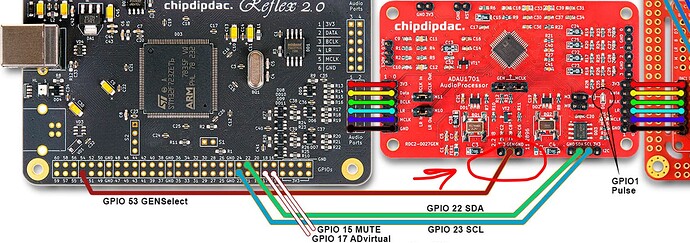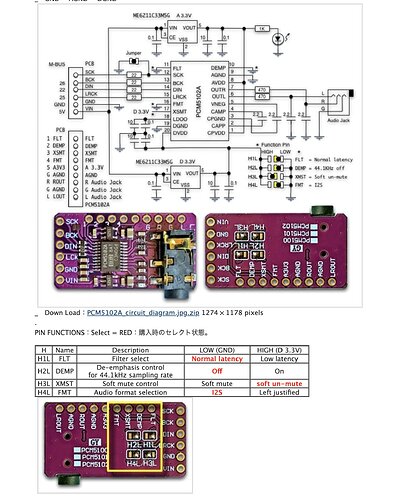@Totof Thanks for your message!
The Chipdip ADAU1701 board has two I2S inputs, two I2S outputs, two analog inputs (L/R), and four analog outputs (for 4 speakers).
I can connect the sound via both 3.5mm Jack and i2s bus, which is what I’m trying to do.
As you correctly mentioned, the ADAU1701 is controlled (programmed) via a programmer like the CY7C68013A, using the I2C or SPI bus. I use SigmaStudio to apply filters, adjust frequencies, and modify the audio signal in general.
I don’t have deep knowledge of low-level hardware, especially how clock crystals work.
As I understand it:
When the Orange Pi Zero 2W is in Master mode, it generates the clock.
But it can be switched to Slave mode, in which case it should use the clock from the ADAU1701 — is that correct?
What I want is to transmit audio at a 96,000 Hz sample rate.
My question is:
Since the ADAU1701 board has two high-precision switchable oscillators (12.288 MHz for the 48kHz family, and 11.2896 MHz for the 44.1kHz family), should I rely on those? Or can I just use the clock from the Orange Pi instead?
Switching between the two oscillators is handled by logic on the board depending on the selected sample rate.
I’m just not sure which clock source is better in terms of stability and compatibility when working with the Orange Pi Zero 2W in either master or slave mode.
There are no problems with the ADAU1701 firmware, I can put the ADAU1701 into Master/Slave. But there is no understanding what I need to do on linux to make it work.
Orange Pi can output any discredit frequency over i2s? Or is there a limit, like only 44100 or 48000?
I would like to apologize in advance for such a long post, thanks for still being in touch.


